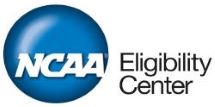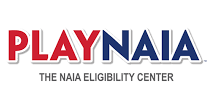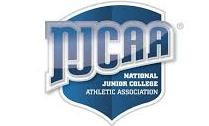College Athletic Scholarship Limits 2022-23:
College Athletic Associations set the maximum number of athletic scholarships their member schools can award to student athletes for official sports. Teams can elect to award fewer – or none – a well. These are the annual limits per team for the 2022-23 athletic year:
 |
 |
 |
Athletic Scholarship Limits: Men's Teams
| Men's Varsity Sports 2022-23 Scholarship limit per Team: | NCAA I | NCAA II | NCAA III | NAIA | NJCAA | |||||
|---|---|---|---|---|---|---|---|---|---|---|
| Baseball | 11.7 | 9 | - | 12 | 24 | |||||
| Basketball * | 13 | 10 | - | 8 | 15 | |||||
| Bowling | - | - | - | 5 | 12 | |||||
| Cross Country - NCAA limits include T&F | 12.6 | 12.6 | - | 5 | 10 | |||||
| Fencing | 4.5 | 4.5 | - | - | - | |||||
| Football - NCAA I FBS * | 85 | - | - | - | - | |||||
| Football - NCAA I FCS | 63 | - | - | - | - | |||||
| Football - Other Divisions | - | 36 | - | 24 | 85 | |||||
| Golf | 4.5 | 3.6 | - | 5 | 8 | |||||
| Gymnastics | 6.3 | 5.4 | - | - | - | |||||
| Ice Hockey | 18 | 13.5 | - | - | 16 | |||||
| Lacrosse | 12.6 | 10.8 | - | 12 | 20 | |||||
| Rifle - Includes co-ed teams | 3.6 | 3.6 | - | - | - | |||||
| Skiing | 6.3 | 6.3 | - | - | - | |||||
| Soccer | 9.9 | 9 | - | 12 | 24 | |||||
| Swimming & Diving | 9.9 | 8.1 | - | 8 | 15 | |||||
| Tennis | 4.5 | 4.5 | - | 5 | 9 | |||||
| Track & Field - NCAA limits include X-C | 12.6 | 12.6 | - | 12 | 20 | |||||
| Volleyball | 4.5 | 4.5 | - | - | - | |||||
| Water Polo | 4.5 | 4.5 | - | - | - | |||||
| Wrestling | 9.9 | 9 | - | 10 | 20 | |||||
| - | ||||||||||
| Average Athletic Scholarship | $18,013 | $6,588 | - | $8,093 | $2,376 |
Athletic Scholarship Limits: Women's Teams
| Women's Varsity Sports 2022-23 Scholarship limit per Team: | NCAA I | NCAA II | NCAA III | NAIA | NJCAA | |||||
|---|---|---|---|---|---|---|---|---|---|---|
| Basketball * | 15 | 10 | - | 8 | 15 | |||||
| Beach Volleyball ** | 6 | 5 | - | - | 14 | |||||
| Bowling | 5 | 5 | - | 5 | 12 | |||||
| Cross Country - NCAA limits include T&F | 18 | 12.6 | - | 5 | 10 | |||||
| Equestrian | 15 | 15 | - | - | - | |||||
| Fencing | 5 | 4.5 | - | - | - | |||||
| Field Hockey | 12 | 6.3 | - | - | - | |||||
| Flag Football | 15 | |||||||||
| Golf | 6 | 5.4 | - | 5 | 8 | |||||
| Gymnastics * | 12 | 6 | - | - | - | |||||
| Ice Hockey | 18 | 18 | - | - | - | |||||
| Lacrosse | 12 | 9.9 | - | 12 | 20 | |||||
| Rifle- includes co-ed teams | 3.6 | 3.6 | - | - | - | |||||
| Rowing | 20 | 20 | - | - | - | |||||
| Rugby | 12 | 12 | - | - | - | |||||
| Skiing | 7 | 6.3 | - | - | - | |||||
| Soccer | 14 | 9.9 | - | 12 | 24 | |||||
| Softball | 12 | 7.2 | - | 10 | 24 | |||||
| Swimming & Diving | 14 | 8.1 | - | 8 | 15 | |||||
| Tennis * | 8 | 6 | - | 5 | 9 | |||||
| Track & Field - NCAA limits include X-C | 18 | 12.6 | - | 12 | 20 | |||||
| Triathlon | 6.5 | 5 | - | - | - | |||||
| Volleyball * | 12 | 8 | - | 8 | 14 | |||||
| Water Polo | 8 | 8 | - | - | - | |||||
| Wrestling | 10 | 10 | - | 10 | 33 | |||||
| Average Athletic Scholarship | $18,722 | $8,054 | $7,870 | $3,259 |
CAA I sports are Head Count sports: Men’s & Women’s Basketball, FBS Football, Women’s Gymnastics, Tennis & Volleyball. A head count sport means the stated scholarship limit is absolute, and the number of athletes receiving awards cannot exceed this number, even if the awards are partial. Head count sports generally award a much higher percentage of full scholarships than equivalency sports.
Why are some scholarship limits fractions? All other NCAA sports are Equivalency Sports which means awards can be split into partial scholarships in any proportion up to the maximum allowed. For example, an NCAA Division I school could award 24 Softball players each a 1/2 equivalent scholarship and not exceed the limit of 12 per team. Full scholarships are relatively rare in equivalency sports compared to Head Count sports.
All NAIA sports are equivalency sports for scholarship limits whereas all NJCAA sports are head-count sports. For NAIA schools, aid to students who play at the junior varsity levels does not count in the overall limit on athletic scholarships.
** NCAA Division I institutions that do not sponsor indoor/traditional Women’s Volleyball are allowed an annual limit of 8 equivalency scholarships for beach / sand volleyball.
The above limits are annual and apply to the entire team, so incoming student athletes at a four year institution are typically completing for approximately 25% of the maximum available scholarships.
The above numbers are maximums and schools can award less than the limit. For example Ivy League schools are NCAA I members but they (technically) do not award scholarships based on athletic ability, however they grant other forms of financial aid to student athletes as do most other schools. The US Service Academies (Army, Navy, Air Force & Coast Guard) do not award athletic scholarships, but all students receiving an appointment to the academies have their tuition paid in full.
NCAA & NJCAA Division III schools do not award athletic scholarships, but they do grant other forms of financial aid that student athletes may qualify for. Assistance to academically gifted student athletes can generally be exempted from counting as athletically based assistance only if the student athlete meets certain grade and/or test score criteria established by the various associations.
An additional caveat is that there is a top limit of the number of athletes that can be awarded even a partial scholarship in an equivalency sport – this limit is referred to as the maximum number of counters. For NCAA I baseball teams the maximum number of counters allowed is 27.
If a sport is not listed above, this indicates that it is not an official sport of the governing association and consequently is not subject to the scholarship limits. For example, Men’s rowing and rugby are not official NCAA sports and consequently they are not subject to NCAA scholarship limits. However, for many of these sports the respective teams have agreed to follow rules of other sport associations regarding scholarships and other assistance, often so a varsity level program does not receive a significant advantage over a competing club program from another school.


